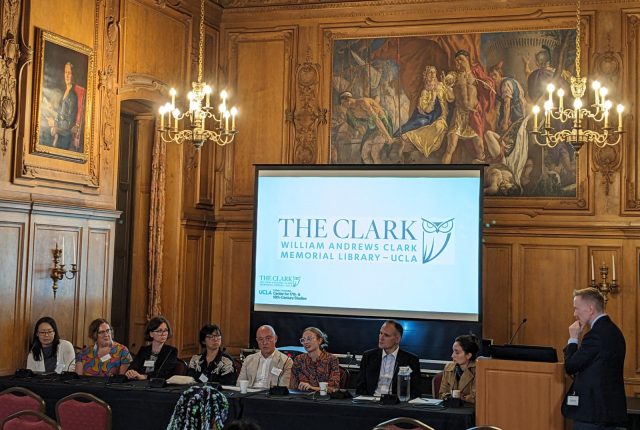
In what was no doubt a particularly laborious act of diplomacy, representatives from the Netherlands sent three gargantuan lanterns to Japan as diplomatic gifts during the Edo period (1603-1868). Unbeknownst to the Dutch, however, the lanterns’ true provenance was later altered to further enhance the objects as markers of shogunal authority and prestige. One of the three was said to come from the Dutch, retaining its true origins, while the others were refigured as gifts from now-Okinawa and Korea. Such a choice, as argued by Timon Screech, reveals the reality of Japan’s internationalist character during the Edo period, despite, at least in name, a national policy of isolationism.
Screech’s research on such global networks of exchange reveals the tenuousness of the myth that Japan was entirely isolated from the outside world from the 1630s to 1853. Indeed, the research of each presenter at “Global Edo: Edo in the World and the World in Edo,” the first conference in the Clark’s 2023-24 Core Program, “Open Edo: Diverse, Ecological, and Global Perspectives on Japanese Art, 1603–1868,” sought to dismantle the stubborn fiction of Japan as an entirely quarantined nation during the early modern period. Speakers further examined thriving connections between the archipelago and China, Vietnam, Portugal, and the Americas. Such networks not only upset past understandings of Japan’s supposed lack of projection onto the international stage during these three centuries, but also how foreign objects and ideas were internalized within the island.
Pushing against such entrenched notions of Edo isolationism proved not only essential to understanding the period under investigation, but also provided a model to be mirrored in scholastic praxis. In a roundtable discussion, speakers encouraged young scholars to work in interdisciplinary and cross-temporal manners not only to de-silo Edo, but also the study of Japanese art history itself. Such work is no doubt challenging – requiring the abandonment of typical scholarly monasticism in favor of open collaboration. Yet, if we have anything to learn from the Netherlands’ three lanterns, cooperation often requires heavy lifting.
-Oliver Ruhl, Doctoral Candidate, Department of Art History

